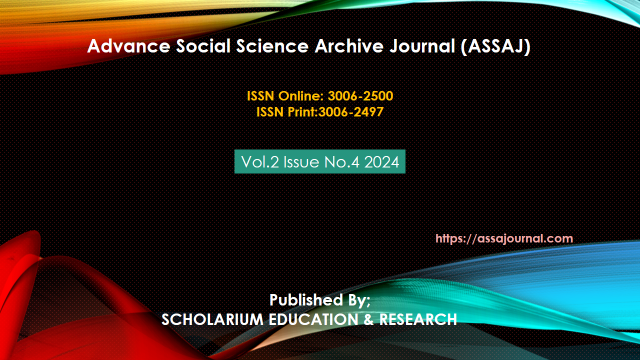ENVIRONMENTAL CHALLENGES IN SOUTH ASIA A COMPARATIVE STUDY OF PAKISTAN AND INDIA
Abstract
South Asia boasts a diverse range of climate zones and is impacted by climate change in unique and significant manners.In South Asia, a vast array of climatic zones co-exist, each unique in their characteristics. Climate change bears a distinctive impact on this region frustrs of our surroundings, A profound and wide-ranging impact which will likely to Food grain production and the stability of ecosystems are considerably influenced by anthropogenic factors, alterations in water distribution, and land utilization changes. The Sundarbans and the Himalayan mountain forest and grassland systems are the most threatened. Forests across South Asia, recognized as crucial hubs of unmatched biodiversity, are rapidly disappearing because of accelerated deforestation and urban expansion activities.With regard to global air pollution, South Asia emerges as the world's most polluted region. Specifically, India is noted for having the highest air pollution concentrations. Around 13,000 acres of farmland and meadows in India and Pakistan may be affected by the 250 acres of territory the Thar Desert is annexing annually year. The accessibility of pristine freshwater is quite cyclical, and aquatic resources face heightened risk due to escalating temperatures, shifts in river regimes, and a surge in maritime inundation occurrence. This analysis examines significant environmental challenges confronted by South Asia, focusing particularly on Bangladesh, and the problems faced by most inhabitants consequently. The key eco-problems addressed here encompass global warming, planetary geology, and alteration of biomes, excessive grazing, and entry of harmful debris, forest depletion, land desertification, contamination, overpopulation stress, and breakdown and land/water resource contamination, scarcity of drinkable water, species. Environmental quandaries such as biodiversity decline, marine environment harm, air contamination, insufficient city planning, water shortage and impairment, soil erosion and terrain deterioration, natural catastrophes, infestations, and ailments illustrated in this section. A number of suggestions have also been proposed in response to considerable ecological concerns flagged and corresponding troubles.
Keywords: Biodiversity, Brickfield, soil erosion, Urbanization, Water scarcity, Pollution, Climate change.





